The following three screenplay outlines are currently being reviewed by Financiers, Directors and Producers.
The Captains of Coverack Cove
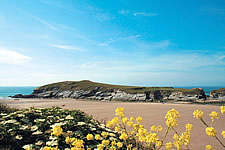
 Captain Angella ‘Angel’ Johnson is of African American origin from Anne Arbor in Michigan and has been a career Naval Officer in the US Navy although she started life studying to be an architect.
Captain Angella ‘Angel’ Johnson is of African American origin from Anne Arbor in Michigan and has been a career Naval Officer in the US Navy although she started life studying to be an architect.
She has had a stellar Naval career having been forward deployed in both Gulf conflicts, has held posts in all significant US fleet operations as well as at the Pentagon in Washington. Now 44, having made Captain and on her way to making Commodore she suddenly feels a profound sense of loss and dissatisfaction about how life will have passed her by if she stays in the US Navy. She has sacrificed everything for her career and as a result she is sill single. Suddenly she senses that there is more behind her than in front of her and the attractions of higher rank can no longer compensate for the sacrifices that it requires.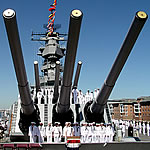
The story starts in Annapolis as she retires from the Navy.
Angel has travelled the globe but has no home and no reason to return to be with her parental family. She has long since dreamt of moving to England and buying an old house.
She finds her place in Coverack Cove on the Lizard peninsula in Cornwall, south of the Helford River. 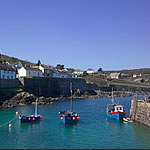 It is a quintessential Cornish fishing community where ‘black’ people are suspected and a rarity but she instantly feels at home becoming something of a celebratory among one and all. She holds her own on nautical matters with the local fisherman and in the evenings of banter in the local taverns.
It is a quintessential Cornish fishing community where ‘black’ people are suspected and a rarity but she instantly feels at home becoming something of a celebratory among one and all. She holds her own on nautical matters with the local fisherman and in the evenings of banter in the local taverns.
But her popularity hides the angst and loneliness she still feels about where she is in her life and especially the lack of any lover and male companion.
A large Victorian house on the bluff, overlooking the cove, captures her heart and imagination. It is dilapidated and in disrepair. It has not sold because of its reputation of being haunted but she goes against all local advice and acquires it. Despite its run down condition, she moves in and begins the task of refurnishing the fine old house.
The ghost is reputedly a Frenchman. Captain Remy Laurient was in command of the SS Paris liner when she foundered on the rocks at Coverack Cove in1929. 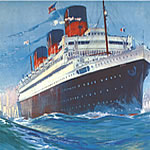 His restless spirit has haunted the house and cliffs since that time.
His restless spirit has haunted the house and cliffs since that time.
Captain Laurient had evacuated the ship but had returned on board to look for two passengers who were deemed missing and thought to be still on the liner. The ship went down and the Captain was never seen again. His body was never found. The missing people were also never found. The Captain is not a malevolent spirit but has previously scared people away because of his desire for solitude. The two Captains meet. Angel is not intimidated by his presence. On the contrary, once she establishes this with him and he refrains from his attempts to make her leave, she is captivated by his mellifluous accent, elegant looks and charms.
The Captain is not a malevolent spirit but has previously scared people away because of his desire for solitude. The two Captains meet. Angel is not intimidated by his presence. On the contrary, once she establishes this with him and he refrains from his attempts to make her leave, she is captivated by his mellifluous accent, elegant looks and charms.
At first she finds him soulful and depressed, a spirit unable to rest having seen his good reputation besmirched by the wreck of the SS Paris whose calamitous end was attributed to the French Captain. A love affair unfolds. In life, Remy had been divorced due to his absences at sea. He also had no children. Angel helps Remy forget his torment over what happened. He in turn responds and relaxes back to his true persona. He treats her like a woman not a Captain; he woos her with his inherent joi de vivre and traditional French love of all things gastronomic and romantic.
A love affair unfolds. In life, Remy had been divorced due to his absences at sea. He also had no children. Angel helps Remy forget his torment over what happened. He in turn responds and relaxes back to his true persona. He treats her like a woman not a Captain; he woos her with his inherent joi de vivre and traditional French love of all things gastronomic and romantic.
But they cannot consummate their love. The would be couple console each other about their respective regrets and predicament.  The dichotomy for Angel is that having been inspired to optimism and embrace the future, it cannot include the man she now adores.
The dichotomy for Angel is that having been inspired to optimism and embrace the future, it cannot include the man she now adores.
He is not a day older physically than the 46 years that he was in 1929 and explains to Angel how he has watched the world evolve for 80 years. He explains to Angel the rules of the ‘After Life’ are that a spirit who has chosen to stay in the ‘Fore Life’ must stay there as a spirit unless they can release themselves from guilt.  Only then can a spirit pass serenely to the ‘After life’ .Or, if they redeem themselves with an act equal to that which caused their guilt, they can choose to resume their lives on earth from the moment of their redemption.
Only then can a spirit pass serenely to the ‘After life’ .Or, if they redeem themselves with an act equal to that which caused their guilt, they can choose to resume their lives on earth from the moment of their redemption.
Angel then uses her military expertise to re open an investigation about the wreck of the SS Paris and with the help of a Maritime Accident Investigator, she proves that the accident was not the fault of the Captain.  Moreover she discovers that the people who were supposedly lost were never on board - there was an error in the passenger list.
Moreover she discovers that the people who were supposedly lost were never on board - there was an error in the passenger list.
As this news emerges, Angel realises that if this releases Remy’s spirit, she will lose him. She is torn between wanting to free him and wanting to be with him.
About this time, a storm whips up and a local fishing boat is in trouble.  Angel goes out with the crew of the Lifeboat to render assistance. In the course of the rescue, Angel falls overboard. She starts to be overwhelmed by the waves and sea. At the critical moment, a hand holding a boat hook stretches out to rescue her. She reaches for it but at the same time she sees an image of Remy below the waves. She pulls back from reaching for the boat hook. The men of the Lifeboat are sure that she has perished. As she is sinking beneath the waves, Remy appears and pushes her to the surface.
Angel goes out with the crew of the Lifeboat to render assistance. In the course of the rescue, Angel falls overboard. She starts to be overwhelmed by the waves and sea. At the critical moment, a hand holding a boat hook stretches out to rescue her. She reaches for it but at the same time she sees an image of Remy below the waves. She pulls back from reaching for the boat hook. The men of the Lifeboat are sure that she has perished. As she is sinking beneath the waves, Remy appears and pushes her to the surface. 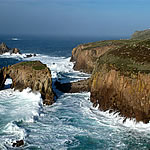 Incredulous over her reappearance, having thought that she was lost to the sea, the Lifeboat crew save her.
Incredulous over her reappearance, having thought that she was lost to the sea, the Lifeboat crew save her.
Later, ashore and safe, Angel returns to the house, distraught by both the experience and the thought that she has lost Remy.
But Remy is in the house. She greets him joyously - only this time he comes up to her and physically embraces her. He has redeemed himself by saving her.  And he has chosen to return to the ‘Fore Life’ on earth not pass to the ‘After Life’.
And he has chosen to return to the ‘Fore Life’ on earth not pass to the ‘After Life’.
Later they walk together into town to thank the Lifeboat men where the couple encounter some of the residents of Coverack Cove - people who had always been asking Angel why she lived alone and when would she ‘get a man?’  The residents are shocked to see her with Remy. And delighted!
The residents are shocked to see her with Remy. And delighted!
‘Where have you been keeping this handsome man,’ they ask in amazement when they see them arm in arm together.
'Oh, he’s been around for years'she smirks. ‘I have just been keeping him invisible!’
The Captains repair to a hotel overlooking the Cove for some Champagne.
(Note: Coverack Cove is a real village and SS Paris really did sink there)
The Kohinoor Diamond
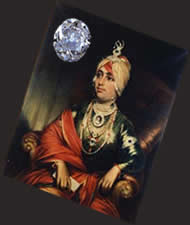
Background:
It is not widely known that Queen Elizabeth, the former Queen Mother, was the last Empress of India. Her erstwhile crown, made in 1937, which sits in The Tower of London, contains the priceless Kohinoor Diamond, which had been presented to Queen Victoria by Lord Dalhousie in June 1850. This followed the British annexation of the Punjab, India, after the British had defeated the Sikhs. One of the terms of the surrender was that from that date the diamond was given to the British. It subsequently became part of the British Crown Jewels.
Some say that the Kohinoor was originally found more than 5000 years ago, and is mentioned in ancient Sanskrit writings. Devout Hindus claim that it was once worn by the great god Krishna, but was stolen from him as he lay sleeping. By contrast, another source has it that the diamond was discovered in a river bed in 3200 BC. The first reliable evidence of it, however, is in the writings of Babur, the founder of the Mogul Empire, who names this diamond as part of the treasure won by Alauddeen (Aladdin) at the conquest of Malwah in 1304 AD. The Moguls acquired the diamond in 1526.
The Kohinoor remained with the Mogul emperors until 1739, when Nadir Shah of Persia, the conqueror of India, got hold of it after laying siege to Delhi. According to legend it was a member of the harem of the Mogul Emperor Mohammed Shah who told Nadir Shah that the jewel was kept hidden in the Emperor's turban. So, at a victory celebration, Nadir used a cunning ploy. He suggested that he and the Emperor partake in a well-known Oriental custom whereby the two leaders would exchange turbans. This would symbolise their close ties and eternal friendship. For the Mogul to refuse would have been a great insult to the conqueror. Later that night, when Nadir Shah unfolded his host's turban he duly found the gem, and cried out 'Kohinoor', which means 'mountain of light'. Nadir Shah then brought the jewel back with him to Persia.
After the death of Nadir Shah the Kohinoor came through devious means into the possession of Ahmed Shah, the Lord of the Royal Treasury and an Afghan chief. Then Ahmed Shah, after a series of long and fierce battles, established himself in Kabul as King of Afghanistan, and held on to 'the great diamond' as a symbol of his authority. Through various subsequent upheavals and rebellions the diamond came back into the possession of the Indian princes, until the annexation of the Punjab secured it for the British.
Over centuries of murder and mayhem, brutality and torture - not to mention deceit and duplicity - the stone had long carried with it a curse that misfortune would always befall its owner, though any woman wearing it would remain unharmed. There was some talk of whether Queen Victoria would return the stone because of the curse. Defiant as always, however, she was adamant it should instead be re-cut and set in a tiara along with over 2000 other royal diamonds.
In 1911 a new crown was made for the coronation of Queen Mary, with the Kohinoor at its centre. Then in 1937 the stone was transferred to another new crown, this time for the coronation of Elizabeth (later to become the Queen Mother) as Queen Consort and Empress of India.
Screenplay: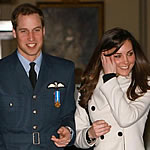 In October 1997, Queen Elizabeth II made a State Visit to India and Pakistan to mark the 50th anniversary of Independence. Many Sikhs in India and Britain used the occasion to demand the return of the Kohinoor diamond. The Sikhs, however, were not the only people who wanted the diamond. In November 2000 the Taliban regime demanded the return of the Kohinoor diamond to Afghanistan. They have claimed that it is the property of Afghanistan, and that history shows that it went to India from Afghanistan and therefore the Afghans have a stronger claim than the Indians.
In October 1997, Queen Elizabeth II made a State Visit to India and Pakistan to mark the 50th anniversary of Independence. Many Sikhs in India and Britain used the occasion to demand the return of the Kohinoor diamond. The Sikhs, however, were not the only people who wanted the diamond. In November 2000 the Taliban regime demanded the return of the Kohinoor diamond to Afghanistan. They have claimed that it is the property of Afghanistan, and that history shows that it went to India from Afghanistan and therefore the Afghans have a stronger claim than the Indians. 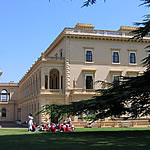 It is 2015. 33 year old, Prince William is the newly crowned King of England after his father has decided not to take up the crown. Part of the motive for this has been that the crowning of William as King has been the most effective strategy to see off renewed calls to disband the monarchy and turn the UK into a Republic.
It is 2015. 33 year old, Prince William is the newly crowned King of England after his father has decided not to take up the crown. Part of the motive for this has been that the crowning of William as King has been the most effective strategy to see off renewed calls to disband the monarchy and turn the UK into a Republic.
In 2011, William had married the beautiful Kate in a fairytale relationship that caught the imagination of the British people. The ceremony was a global event and the stature and popularity of the celebrated young couple had seemingly restrored Britain's commitment to its monacrhy. To mark his cornotaion, William intends to give Kate a ring fashioned from a part of the Kohinoor diamond retained when it was cut and now kept in the collection of Queen Victoria in Osborne house. The sentiment and story behind this are meant to be romantic as the diamond is meant to protect the woman that wears it but as the story becomes public, it prompts another groundswell of dispute about the ownership and possession of the diamond. 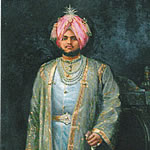 The expanded base of ethnic MP’s now in British parliament lead by Muslim parliamentarians, claim once again that that the diamond is the property of Afganistan. This time however, extremists among them combine interests with those of the Taleban in Afghanistan who had also claimed the jewel. Instead of counter claiming, they join forces with the claim that the jewel should be returned.
The expanded base of ethnic MP’s now in British parliament lead by Muslim parliamentarians, claim once again that that the diamond is the property of Afganistan. This time however, extremists among them combine interests with those of the Taleban in Afghanistan who had also claimed the jewel. Instead of counter claiming, they join forces with the claim that the jewel should be returned.
As such the possession of the diamond becomes the focus of a religious based claim set against and exacerbated by the turmoil of religious based terrorism that has advanced and worsened since the infamous events of 9/11.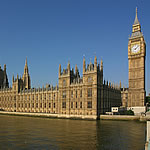
Beyond the claim the diamond is effectively the catalyst of a constitutional crisis whereby the people of England do not want to give back the diamond but they are being harangued and threatened by a small number of ethnic MP’s who clearly have no interest or loyalty to Britain yet serve in their parliament! The battle for possession of the diamond becomes de facto a battle of whether control of Britain should rest with the majority or minority. The lines of feud are not merely religious and racial but clouded by the misguided ambitions of liberal republicans who naively try to leverage the dispute for their own interests.
A real constitutional crisis evolves as heir apparent King William refuses to back down. 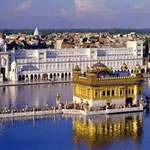 The Government takes a weak stance trying to appease but this is clearly against the wishes of the populace. The fact that the majority happen to be white and Christian is used against them and characterised as symptomatic of racist attitudes in Britain.
The Government takes a weak stance trying to appease but this is clearly against the wishes of the populace. The fact that the majority happen to be white and Christian is used against them and characterised as symptomatic of racist attitudes in Britain.
The film dialogue captures the full gambit of all intellectual and political arguments over how to treat history and Imperialism and whether PM’s from anti British ethnic minorities or any other MP’s who have no real national support or interest in Britain, should be MP’s at all? A national crisis looms when the old ‘pub argument’ of the litmus test of a person’s national loyalty being if they support England in an England versus Pakistan cricket match, becomes replaced by whether or not the person thinks that Britain should keep the Kohinoor diamond. 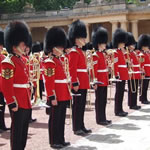
The Government orders the King to handover the diamond. More arguments ensue about whether Crown property is the personal property of the King or the state? The King has served in the army and turns to old friends. The military protect Osborne House which has been surrounded by Islamic extremists trying to take possession of the diamond. Tension builds as the real prospect of civil war looms.  Extremists disinterested in the diamond but intent on the destruction of ‘the west’ lend all their energies to worsening the nature of this crisis by enrolling young Muslims not just against Britain but the whole western world. They try to use is as the catalyst to start another international Jihad.
Extremists disinterested in the diamond but intent on the destruction of ‘the west’ lend all their energies to worsening the nature of this crisis by enrolling young Muslims not just against Britain but the whole western world. They try to use is as the catalyst to start another international Jihad.
Young people ordinarily untouched by politics are caught up in the furore.
Concomitant to this, the King’s position becomes more and more entangled. He wants to do the right thing but he sees the strength of feeling among his own people.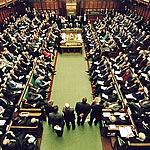 He receives pressures and conflicting advice on both sides and even the intervention of the army becomes a possibility. It is clear that the mood and sentiment of the people are with the King but are they not accustomed to defying their own Government.
He receives pressures and conflicting advice on both sides and even the intervention of the army becomes a possibility. It is clear that the mood and sentiment of the people are with the King but are they not accustomed to defying their own Government.
The Government is against the extremists but some of them are a part of that Government. In being weak the Government is not representing the majority of its British people but is pandering to the minority unable to resist or articulate a firm position against racial and religious opportunism by a fanatical minority. 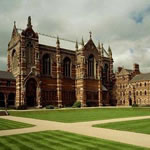 As the tension has been escalating, an Oxford professor from a second generation Indian family researches the history of the diamond. Through the conduit of his Indian connexions he is able to contact the Head of the State of Punjab and the linear descendants of the former ancestral rulers of the Punjab.
As the tension has been escalating, an Oxford professor from a second generation Indian family researches the history of the diamond. Through the conduit of his Indian connexions he is able to contact the Head of the State of Punjab and the linear descendants of the former ancestral rulers of the Punjab.
A series of secret meetings takes place with these parties and William. Meanwhile a coalition of political activists from every fanatical and zealous background endeavour to make fresh demands on the British government about the Kohinoor diamond’s return to India at which point William announces that he has privately returned it to the Punjab and is able to cite the history that establishes the Punjab as the rightful owner.
Meanwhile a coalition of political activists from every fanatical and zealous background endeavour to make fresh demands on the British government about the Kohinoor diamond’s return to India at which point William announces that he has privately returned it to the Punjab and is able to cite the history that establishes the Punjab as the rightful owner.
The pre-eminence of the old Oxford professor’s status , the accuracy of his research and his usefully cross cultural profile as both being of Indian origin but an ‘establishment‘, 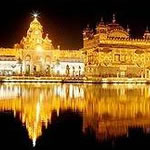 utterly Anglophile figure in British Society, prove compelling in making the ownership history indisputable. The coalition of extreme anti British activists is stymied.
utterly Anglophile figure in British Society, prove compelling in making the ownership history indisputable. The coalition of extreme anti British activists is stymied.
The diamond is taken on a tour of the Punjab to show the people. It is rapturously greeted.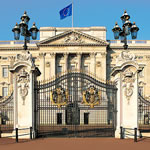 But the story is not concluded.
But the story is not concluded.
A few months later as Williams approaches his formal coronation, he meets with the Head of the Punjab, the Oxford Professor and the linear descendants of the last Maharaja of Punjab meet with William in London before the ceremony. At a high profile function at Buckingham Palace in advance of the ceremony, the Head of the Punjab presents a gift to the bride to be. The gift is the Kohinoor diamond.
The gift is the Kohinoor diamond.
The noble Sikh uses the platform to talk about forgiveness. Although both Britain and the people of the Punjab have had an acrimonious history, there has also been great friendship and respect. The Punjabi statesmen together with William talks about the power of reconciling differences. William had given the diamond back to the Punjab even though he was the legal owner. The Punjab in an act of equal grace, representing a genuine intent in terms of peace and reconciliation had then returned the gift as a present.
The young King William had shown himself to be a peace seeking internationalist of great stature - conciliatory, prepared to act magnanimously and do the right thing but yet strong and decisive. He had carried out the wishes of his people by defying mal intended activists who were using the issue unscrupulously for their own interests to undermine Britain. Moreover William had also defied and exposed the compromising, spineless and ineffectual politicians without compromising his constitutional authority.
The diamond became a symbol of how peoples could reconcile.
The film closes with all four men being nominated for the Nobel Peace prize.
Green Peace - White death

 Michael (Rex) Whistler is a likeable but phlegmatic underachiever - despite his natural talents. He has perfected an air of relative disinterest in anything competitive even attracting woman. Despite this he is self driven and quietly engages in personal and physical challenges that mean something to him.
Michael (Rex) Whistler is a likeable but phlegmatic underachiever - despite his natural talents. He has perfected an air of relative disinterest in anything competitive even attracting woman. Despite this he is self driven and quietly engages in personal and physical challenges that mean something to him.He is an ex long range Navy Nimrod pilot now living in Rio De Janeiro, working as a Captain on a third rate freight airline hacking from South America to USA – because he couldn’t stand working for a passenger airline with all its protocol.
 The story unfolds to reveal his creeping realisation of his own mortality that his life as a fiercely independent bon viveur and bachelor cannot go on forever and has got him nowhere. An increasing and inevitable experience gulf between him and the younger crew members who tease him about his age give him cause for reflection about the partying and some profound angst about his dircetion.
The story unfolds to reveal his creeping realisation of his own mortality that his life as a fiercely independent bon viveur and bachelor cannot go on forever and has got him nowhere. An increasing and inevitable experience gulf between him and the younger crew members who tease him about his age give him cause for reflection about the partying and some profound angst about his dircetion.  |
 |
 An ex Fleet Air Arm pal of his works for Green Peace as a helicopter pilot in Alaska. He has always tried to persuade Whistler to join them. One day the friend goes missing in Alaska. He dies in a crash. The blame is put on an oil company who are portrayed as having caused the crash in order to avoid the friend seeing some of their spillage from unlicensed exploration.
An ex Fleet Air Arm pal of his works for Green Peace as a helicopter pilot in Alaska. He has always tried to persuade Whistler to join them. One day the friend goes missing in Alaska. He dies in a crash. The blame is put on an oil company who are portrayed as having caused the crash in order to avoid the friend seeing some of their spillage from unlicensed exploration. Whistler only learns about his friend’s death by accident when he was contacting Green Peace. It’s the catalyst he needs to get out of his rut. Whistler quits his job and goes to Alaska by way of meeting with Green Peace to find out what happened to his friend.
 When Green Peace hears that Whistler is a pilot, they try to convince him to join them.
When Green Peace hears that Whistler is a pilot, they try to convince him to join them.Whistler declines but works with Green Peace to try to solve the mystery of his friend’s death. It appears that the oil company has been acting in a way that suggests they are hiding something. Whistler uses guile and subterfuge to break into a high level oil company meeting where he confronts the executives. As he leaves he proclaims,
‘I don’t believe your story about Peter Kedward. He was my friend. He was too good a pilot to be killed by a mistake like that’.

Green Peace draft in a team of Police and journalists in order to construct both a legal case and a derogatory communication campaign against the oil company. But the zeal of the Green Peace representatives shocks Whistler. They show themselves intent on using any level of unscrupulous tactic to destroy not just the oil company but use the case as platform to deride all capitalist organisations in the State and internationally. The venom and perfidious methods used to orchestrate a campaign of defamation against the oil company and their senior executives is inherently antagonistic to Whistler’s sense of justice. When he surfaces his concerns, he is threatened.
 This antagonises his deeply ingrained dislike of intimidation or manipulation.
This antagonises his deeply ingrained dislike of intimidation or manipulation.Whistler initially makes a bad impression on one of the local Green Peace operatives, an Italian woman with whom he gets off to a bad start clashing on politics and his masculine ex forces demeanour. She is mocking and dismissive of his job with third rate freight airline. But he senses her own doubts about what is going on.
A courageous boat rescue of some local Alaskan Indians by Whistler and his strong defiance of the aggressive Green Peace invective makes her view him in a different light.
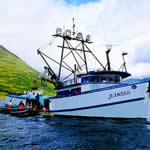 Her doubts about her Green Peace colleagues are compounded when an attempt to set up Whistler on illegal possession of a firearm is unsuccessful.
Her doubts about her Green Peace colleagues are compounded when an attempt to set up Whistler on illegal possession of a firearm is unsuccessful. Whistler finds one of the Police team and one key journalist share his concerns and soon his new found female Australian admirer is offering to help him. In following some of the key oil company executives, they discover things about their personal activities that show the oil people to be keen environmentalist and clean living family people.

Gradually Whistler and his cohorts start to assemble information that reveal how the self serving members of Green Peace are extremists and start to suspect that they actually caused the death of Whistler’s friend.
It emerges that the oil company was trying to discreetly organise the professional and well thought through handling of news about an important new oil field find which they knew would be sensitive and have impact on the local peoples and area.
 They were not covering up any spillage. The oil company is shown to be highly reputable and planet orientated in its operating policies and corporate governance – more so than the celebrity driven headline seeking bigots of Green Peace who are shown to be radical liberals, quasi terrorist thrill seekers and actually indifferent to the environment.
They were not covering up any spillage. The oil company is shown to be highly reputable and planet orientated in its operating policies and corporate governance – more so than the celebrity driven headline seeking bigots of Green Peace who are shown to be radical liberals, quasi terrorist thrill seekers and actually indifferent to the environment.Justice unfolds.


